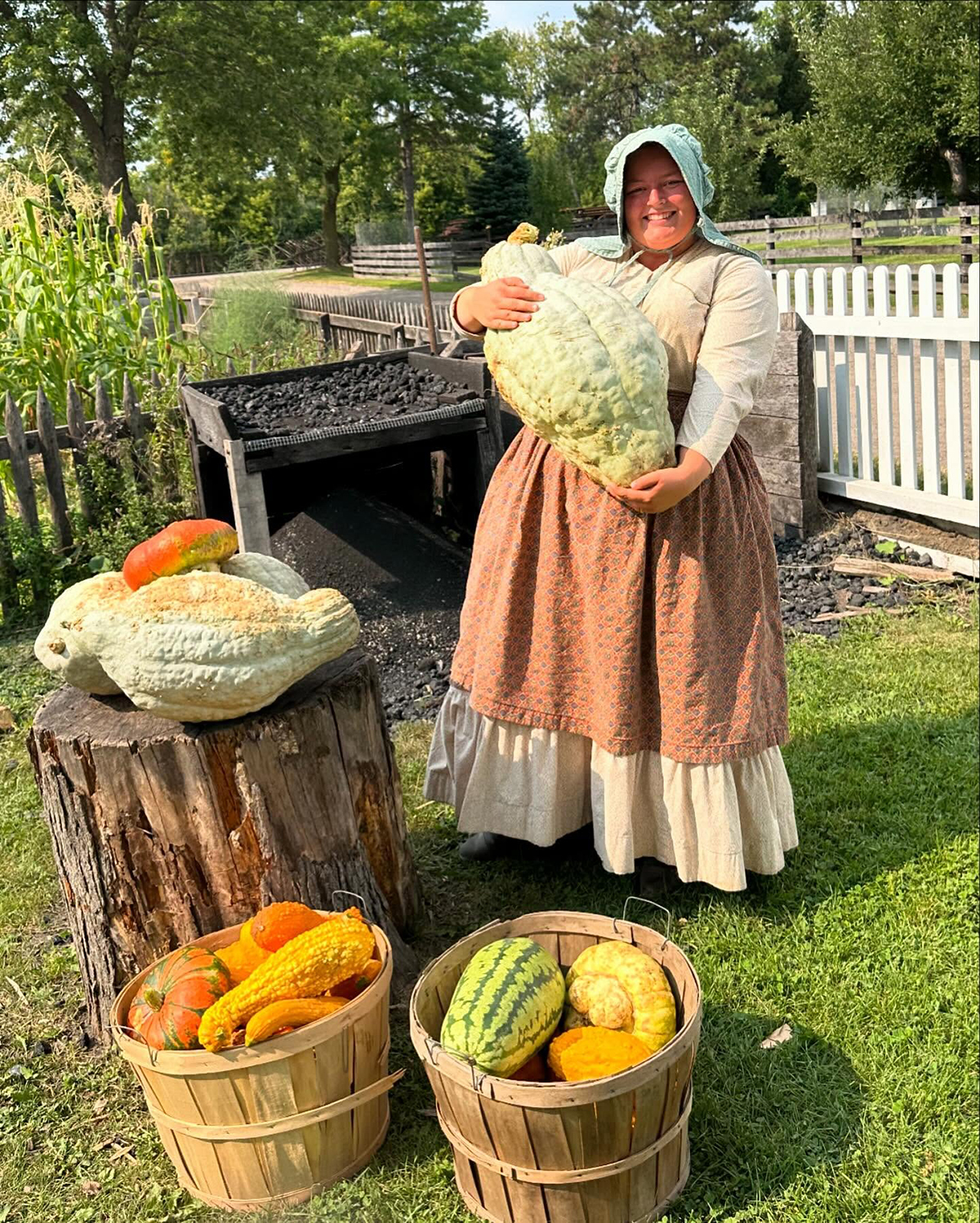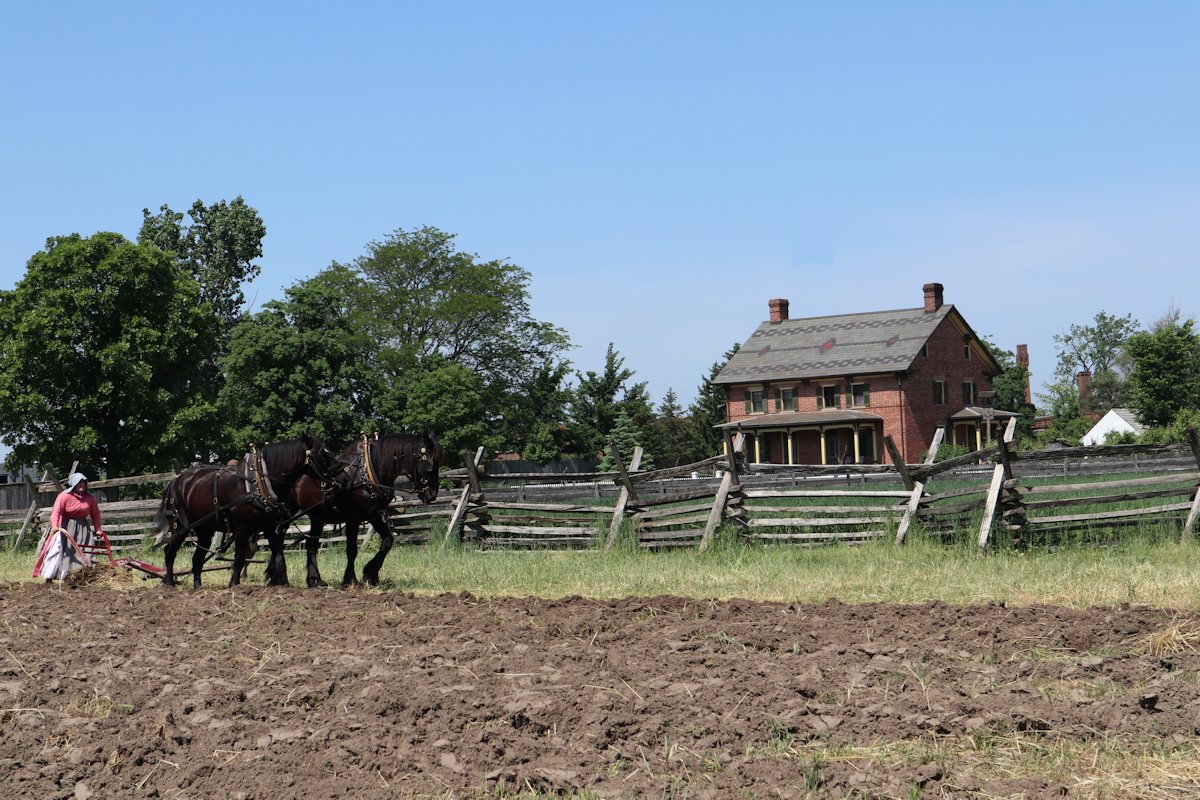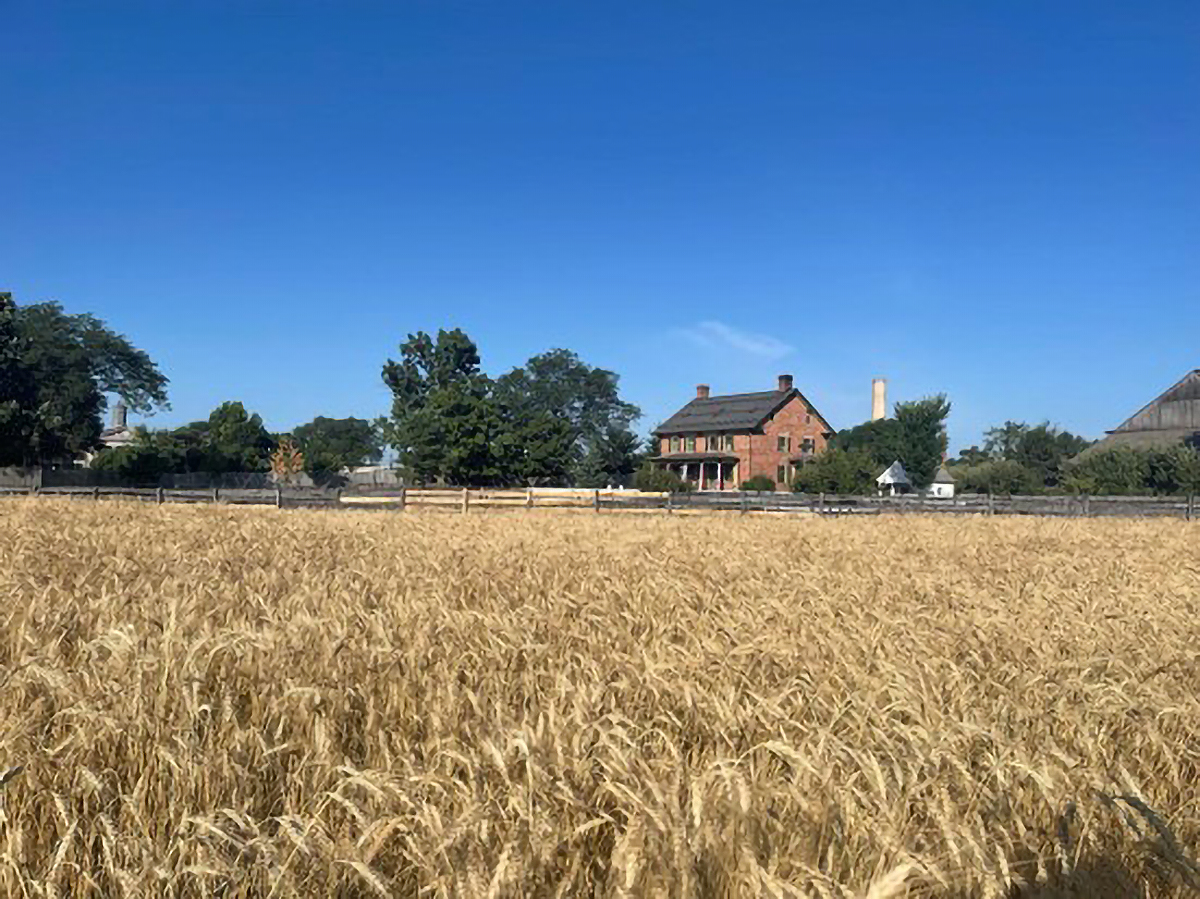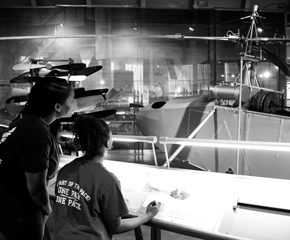Learning from our Ancestors – Garden Sustainability in the 19th Century
Greenfield Village is host to a plethora of gardens, both floral and vegetable. The Living History and Agricultural teams are responsible for the historic growing spaces to produce the vegetables, fruits, dye materials, and herbs that our ancestors would have relied on — spanning from 1760 through 1930. These items are grown in both kitchen gardens and fields. We can learn from these sustainable systems, and from those that came before us, to make educated decisions for our modern home gardens. Firestone Farm is an excellent example, as it has the most comprehensive growing space, and guests can see the process from farm to table.

Firestone Farm kitchen garden / Photo courtesy of Morgan Lewerenz
The kitchen garden has been the heart of the growing space for home use for many centuries. During the 19th century, the vegetables, herbs, and fruit grown in the kitchen garden were the first used in the house for daily meals. When there was abundance — much of which was planned — then produce would be used in preservation recipes. The cycle of the kitchen garden is just as necessary for human consumption as it is for the annual rehabilitation of the growing space. Gardens serve the home during the growing season and in turn, we give back to the gardens when the plot is uncultivated during the winter. During the cold season, animal waste on the tilled land as well as distribution of compost as the ground begins to warm prepare the garden for the next year of production. Likewise, kitchen scraps could equally go back to the compost and the hogs, providing sustenance for the future. Many agricultural manuals of the time also include instructions on how to use objects on the farm and surrounding lands to build structures in the garden. Guests will often see A-frames and trellises in the gardens made by branches that have fallen and been repurposed.

The field at Firestone Farm / Photo courtesy of Morgan Lewerenz
The field is the backbone of the growing spaces for a farm. This space is often planted with row crops for cellar storage, food for animals, and grains that could be sold. The Firestone Agriculture team includes Turkey Red winter wheat in their annual plantings based on research into the Firestone family in the 1880s. This sellable crop would have been planted in late fall and come spring clover could be broadcasted over the wheat to help minimize weeds from developing. After wheat harvest in mid-summer, the clover would be plowed into the ground to help replenish the soil with nitrogen. Another soil replenishing cover crop, like buckwheat, could be planted between harvest and planting. The buckwheat would then be tilled into the soil before replanting the next season's wheat. Crops like corn were often planted with pumpkins, a testament of Indigenous knowledge of sustainability. The "three sisters" method of planting allowed for the best use of space in the field and the best support system for the crops planted. Guests can see how the Firestone team grows pumpkins in the corn field for that same efficiency as both are harvested at the same time.

"Three sisters" planting at Firestone / Photo courtesy of John Forintos
Composting was essential to the success of growing spaces on 19th-century farms. Many period manuals instructed farmers to use their "thoroughly rotted and rich compost" to supplement nutrients in their garden spaces. The current Firestone teams use a combination of animal and produce waste to create their compost and have even been working with the new biodigester at Stand 44 to supplement plant matter to help keep the mixture balanced. Manure also has to go through a stage of composting before it can be useful in the garden. Guests can see the consistent manure heap, often steaming, near the barn ramp. The manure has to be regularly turned and watered — just like a compost pile. Similarly, the farm team uses a technique called "hard packing" for the animal pens during the winter. This practice allows the manure to be covered with straw, creating layers of buildup throughout the winter. Pens stay clean with additional straw and the animals benefit from the warmth of the straw-manure layers starting to ferment. Then in the spring, pens are deep cleaned and the mature manure/bedding is added to the pile adjacent to the barn ramp.
The Living History and Agriculture teams are using historic methods to care for the growing spaces in Greenfield Village, but this is knowledge that has been around for hundreds of years and much of it is still being used today. We hope that today's gardeners can be inspired by our ancestors to try out some new-old sustainable practices at home!

Turkey Red winter wheat at Firestone Farm / Photo courtesy of John Forintos
Emily Sovey is manager of Living History
John Forintos is manager of Historic Agriculture, Horticulture, Animal Husbandry and Town Life
Morgan Lewerenz is master farmer of Historic Agriculture
Kelly Salminen is a Firestone Farm program specialist

